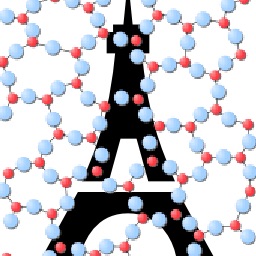Stability of calcium-alumino layered double hydroxide nanocomposites in aqueous electrolytes
Calcium-alumino layered double hydroxide (LDH) nanocomposites of the AFm subgroup hosting alkyl sulfates and polyethylene glycol (PEG) were synthesized by co-precipitation over the temperature range 5 °C-to-75 °C. The stability of these nanocomposites was examined following exposure to aqueous solutions conditioned to a range of concentrations of intercalant anions including sulfate, carbonate, chloride, and phosphate. Careful analysis of these ‘organic-inorganic’ nanocomposites reveals that their gallery (interlayer) spacing can vary, and the gallery height is controlled by the chain length (i.e., size) and orientation of surfactant substituents, wherein, expectedly, anionic surfactants intercalate more robustly than non-ionic surfactants. Upon anion exposure, in general, the nanocomposites: (i) are unstable at SO42-(aq) ≥ 10 mM wherein they convert to the AFt (ettringite) phase, (ii) form solid-solutions containing carbonate for CO32-(aq) ≤ 1.5 mM, and which coexist with calcite at higher carbonate concentrations, (iii) form solid-solutions containing phosphate at PO43-(aq) ≤ 1.45 mM and convert to hydroxyapatite at higher phosphate concentrations, and, (iv) form solid solutions for Cl-(aq) ≤ 100 mM, but at higher concentrations Cl- gradually displaces the surfactants forming Friedel’s salt. These insights into the stability and equilibrium phase relations for calcium-alumino LDH nanocomposites improve our understanding of these materials for applications including: contaminant sorption, as carriers for the functional release of chemical additives in construction materials, and in bio-therapeutics applications.
